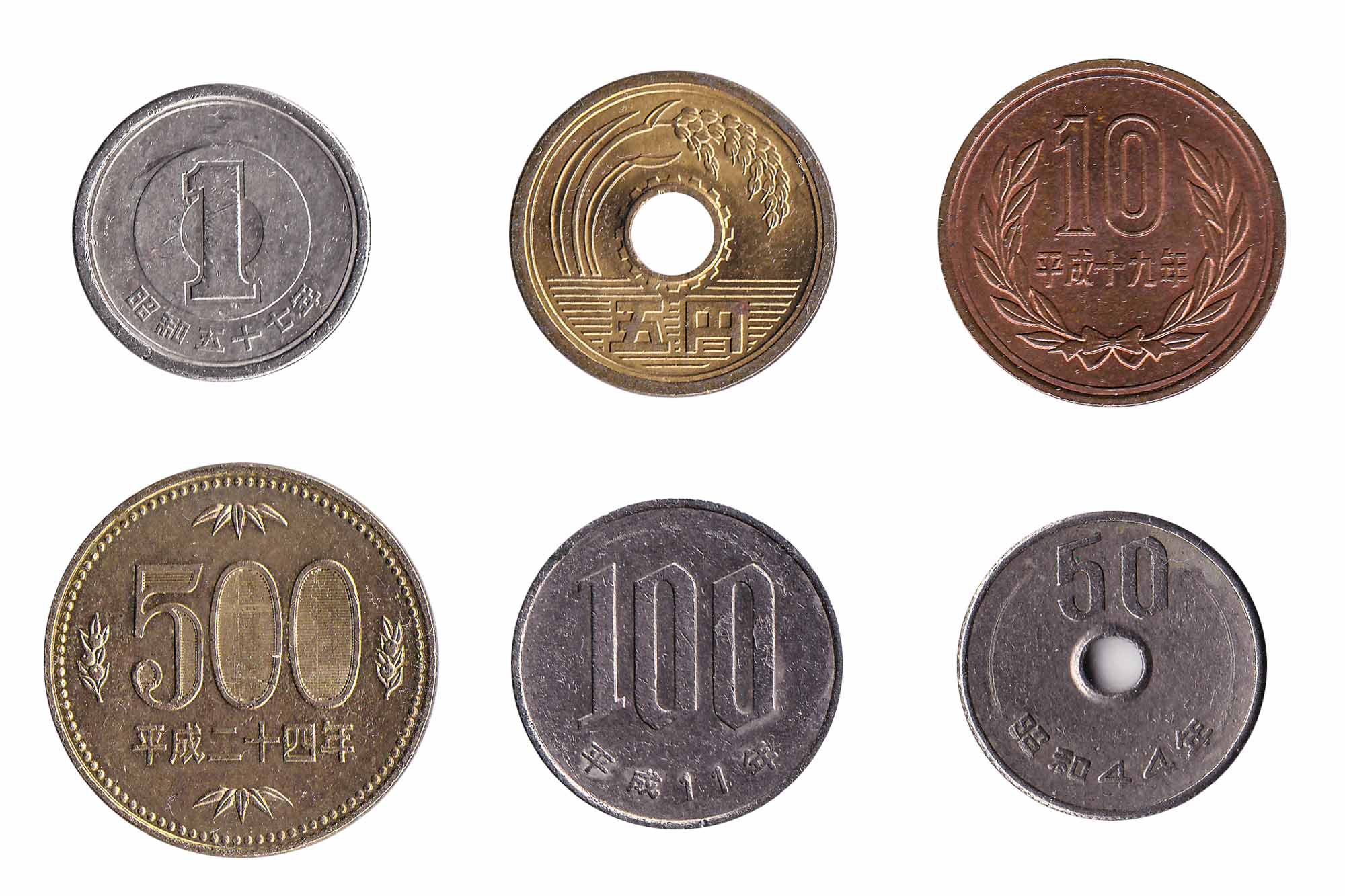Japanese Coins
4/11/2022 admin
Japanese Bank Notes & Coins
Japanese Bank Notes
The Japanese unit of currency is the Yen or en represented by the symbol ¥ and the code JPY.
GREAT JAPAN (NIPPON GINKO) / Byōdō-in temple / 10 YEN Y#73 (1951-1958, edge reeded) and Y#73a (1951-1958, edge smooth) Coin value - 1 5 yen 1949 (1948-1949). Coins: World - Asia - Japan. See more Japan 1000 Yen, 1964, 1964 Olympic Games. Japan Meiji 1en Silver Coin 1876 Year Meiji 9nen Trade Dollar 81. Silver Rising Sun Dragon 20 Sen Japan Old Coin (1870 Meiji3) 006. JAPANESE COINS & CURRENCY RECTANGULAR SILVER COIN OF THE SHOGUNS OF JAPAN These unusual rectangular silver 1 Bu (Ichibu Gin) coins was one of the last coins issued by the famous and once powerful Shoguns of Japan. The Shoguns were the military rulers of Japan, who for hundreds of years controlled the island nation. Japanese Yen coins have been produced by the Osaka-based Japan Mint since 1871. The current set of Yen coins were first minted in 1955. Coins from 1 to 500 Yen are legal tender in Japan. Bureaux de change and Banks outside Japan will not accept Japanese Yen coins for exchange.
Japanese Coins Value
Bank notes in circulation in Japan are in denominations of 10,000, 5,000, 2,000 (rarely seen) and 1,000 yen. Japanese bank notes and coins are issued by the Bank of Japan in Tokyo.
The 10,000 yen note has a portrait of Yukichi Fukuzawa (1835-1901), the Meiji Period scholar on the front and the reverse has an illustration of the famous Phoenix from Byodo-in Temple in Uji, near Kyoto, which also features on the 10 yen coin.
The 5,000 yen note features Ichiyo Higuchi (1872 -1896), Japan's first important female writer of the Meiji era. On the reverse are irises from a byobu folding screen by Ogata Korin (1658-1716), which flower in the 5th month (may), hence the connection. The previous series featured Inazo Nitobe (1862-1933), the author of Bushido - The Soul of Japan, on the front.
The 2,000 yen note is rarely seen in circulation and did not prove popular after its introduction in 2000 to celebrate the millennium. The 2,000 yen note features the Shureimon Gate in Naha, Okinawa on the front and an image of scene from The Tale of Genji and the author Murasaki Shikibu on the lower right corner.
The latest 1,000 yen note (Series E) issued in 2004 has Noguchi Hideyo (1876-1928), the bacteriologist on the front and an image of Mt Fuji, Lake Motosu and cherry blossoms on the reverse. The previous series of notes issued from 1984-2004 had the novelist Soseki Natsume (1867-1916) on the front and two Red-crowned cranes on the reverse.

Japanese Coins

Japanese coins are for 1 yen, 5 yen, 10 yen, 50 yen, 100 yen and 500 yen. The weight of the coins increases with value and it is said the lightest coin the 1 yen (1 gram) will float in the foam of a beer or even in a glass of water.
The 5 yen coin has a hole in the middle and a design that represents rice (agriculture), water (fisheries) and industry.
The 10 yen coin has an image of the Phoenix Hall at Byodo-in, in Uji.
The 50 yen coin also has a hole in the middle and depicts the imperial chrysanthemum.
Japanese Coins 1
The 100 yen coin is silver in color and shows cherry blossoms on the obverse.
The 500 yen coin is also silver in color and depending on fluctuations in exchange rates of the yen the 500 yen coin is often the highest valued coin in the world. The obverse design features the paulownia. The coin has been the target of counterfeit in the past and for a time the Korean 500 won coin could be passed off in Japanese vending machines.
Japan Currency Museums
There are a number of currency museums in Japan dedicated to the history of money in the country.
These include the Bank of Japan Currency Museum a short walk from Mitsukoshi-mae Station B1 Exit on the Tokyo Metro's Hanzomon Line or Nihonbashi Station A1 Exit on the Tozai Line; the Bank of Tokyo-Mitsubishi UFJ Money Museum in Nagoya, a walk from Amagasaka Station on the Meitetsu-Seto Line and the Bank of Japan Museum in Otaru, Hokkaido.
Related Articles on Money in Japan
What to do in Japan with no money
Japan Travel Tips
Top 10 Tips for budget travel in Japan
Japan Banks & Money
Banking in Japan

Books on Japan & Japanese Culture

Early Coinage
The oldest Japanese coins were the Wado kaichin coins produced in 708. Its distribution and extent indicates that were not in circulation throughout the whole of Japan. Between 708 and 958, twelve different types of copper coins of Japan were issued by the central government. By the middle of the 10th century, policy failures coupled with inflation and exhaustion in supply of copper, led to a decline in the quantity of coinage produced. Coins of Japan were replaced with rice and cloth.
Early Modern Period Coinage
In the 16th century, gold and silver coins were minted by feudal warlords. Tokugawa Ieyasu augmented his control over gold and silver mines, secured mintage technology and systems, and issued Keicho silver and gold coins in 1601. The Tokugawa Shogunate government consequently issued Kan'ei Tsuho copper coins, within the process of establishing a unified monetary system called the 'tri-metallic monetary system,' based on gold, silver and copper coins. The tri-metallic monetary system was important because it was a unique monetary system based on the standardized currencies introduced by the central government. The tri-metallic monetary system was a relaxed unification system, which allowed local feudal lords to issue currencies other than the three standardized ones.
Modern Coinage
In the latter half of the 18th century, the demand for small-denomination currency increased due to expanded production of commercial crops. The Tokugawa government issued silver with denominations based on gold coin units. Thus, the Japanese silver coins ultimately became supplementary currencies of gold coins of Japan.
Toward the end of the Edo period, re-coinages were often carried out to finance the budget deficits of the Shogunate government, which led to chronic inflation. After the re-opening of international trade at the end of the Edo period, Japan experienced a huge outflow of gold coins overseas. Hence, the Man'en re-coinage was carried out to stop this outflow. However, this caused further inflation resulting in confusion within the nation's monetary system towards the Meiji Restoration.
The Meiji government implemented measures to develop modern industries and to increase military strength in order to strengthen Japan. The government needed to establish a modern monetary system. Thus in 1871, the government passed the 'New Currency Act' to change the currency units from traditional 'ryo' 'bu' and 'shu' to 'yen' 'sen' and 'rin.' In 1881, Masayoshi Matsukata became Finance Minister and insisted on the need to set up a central bank to produce Japanese Yen. The Bank of Japan was founded in October 1882.